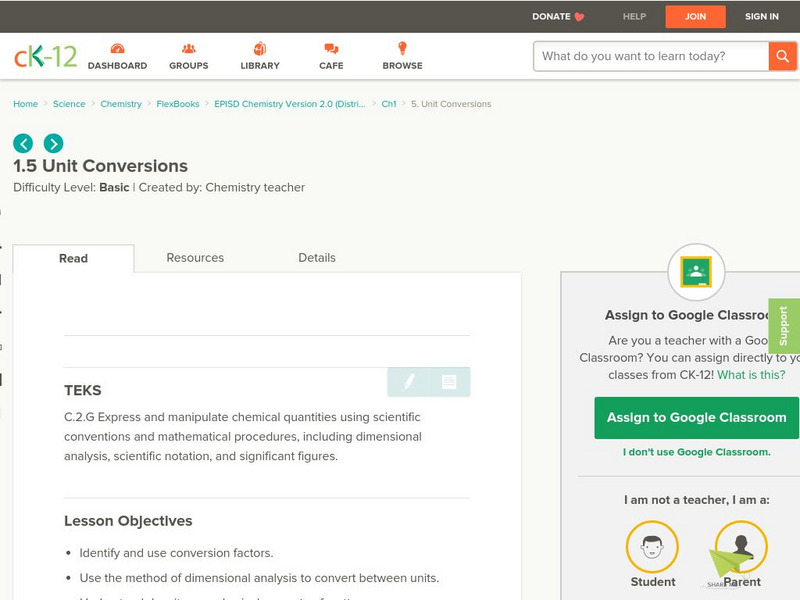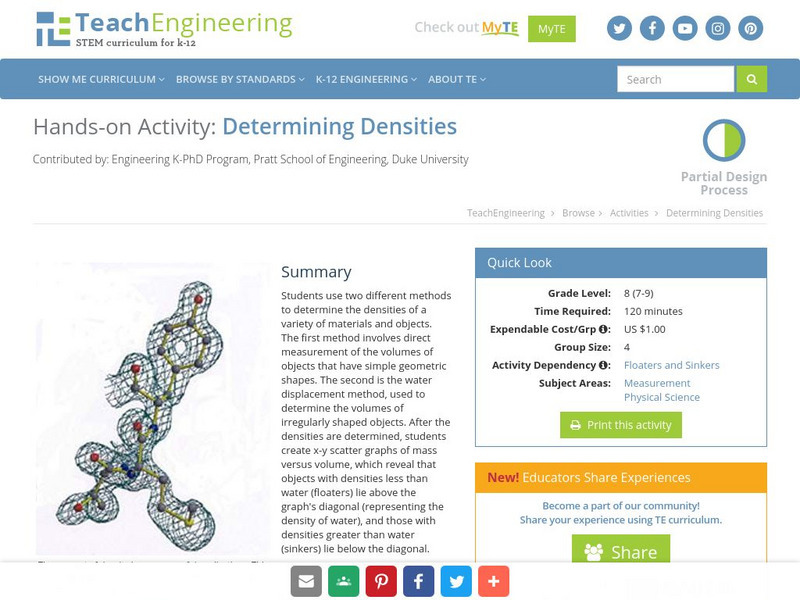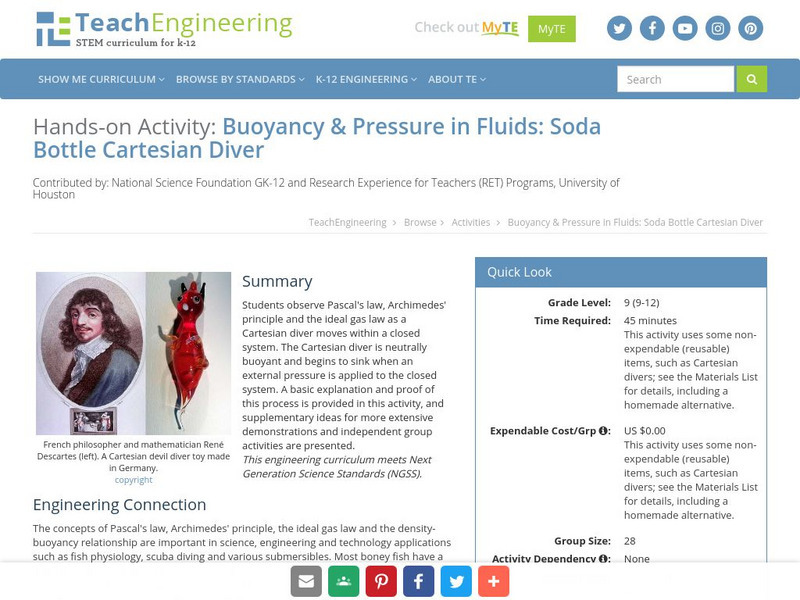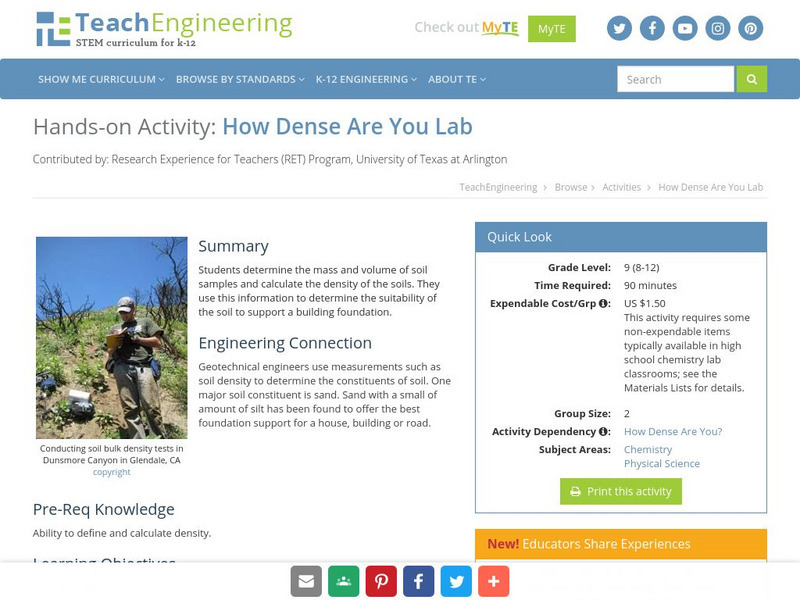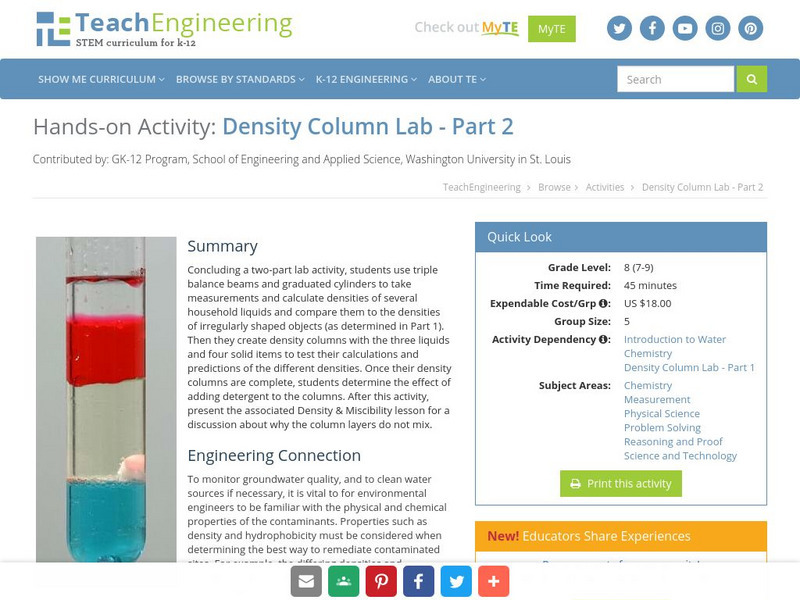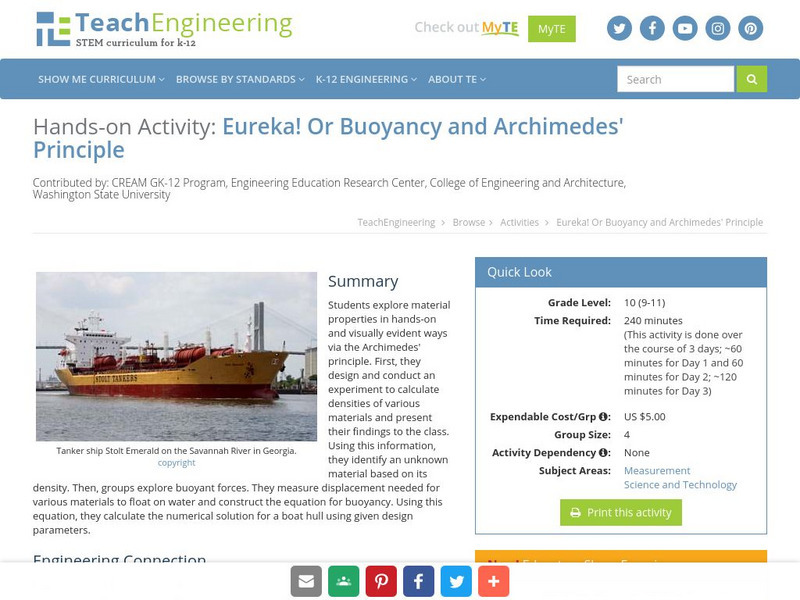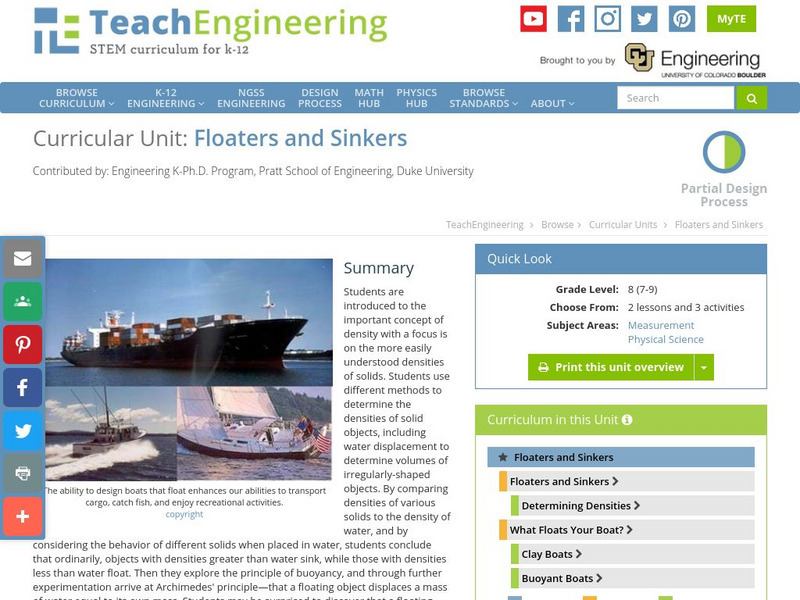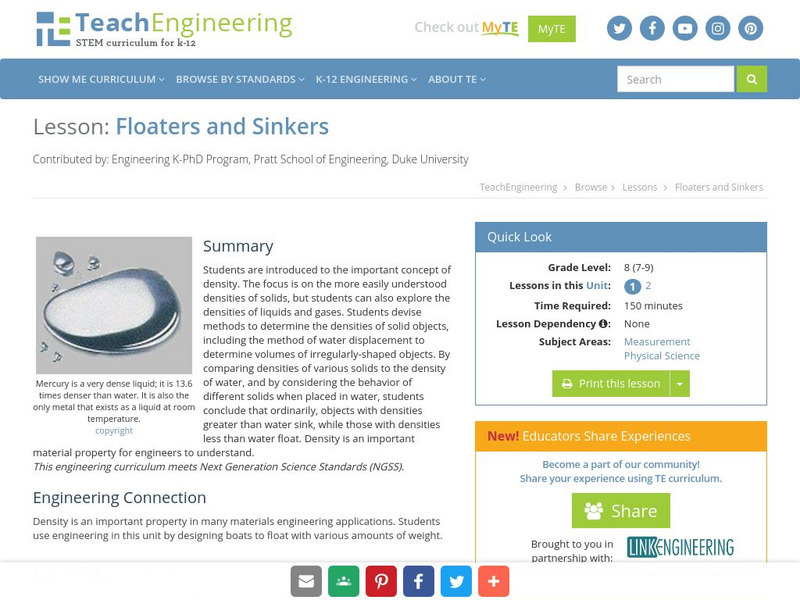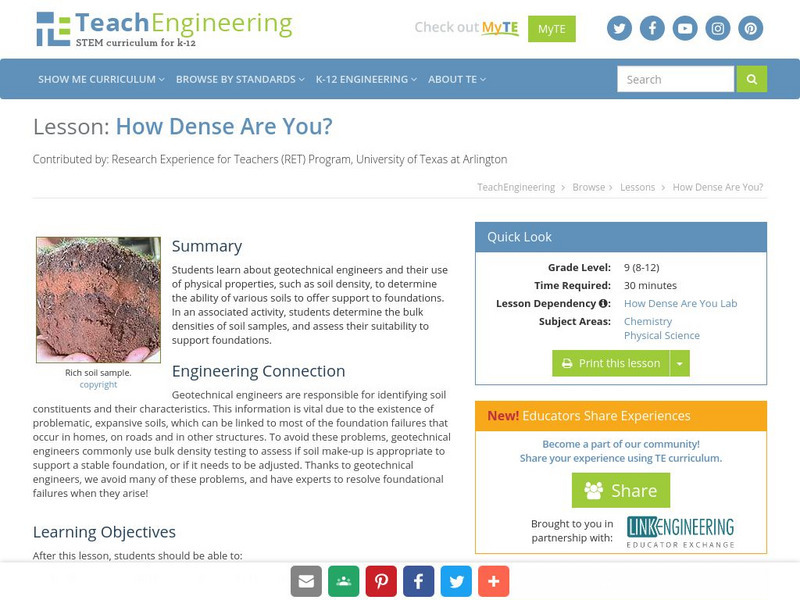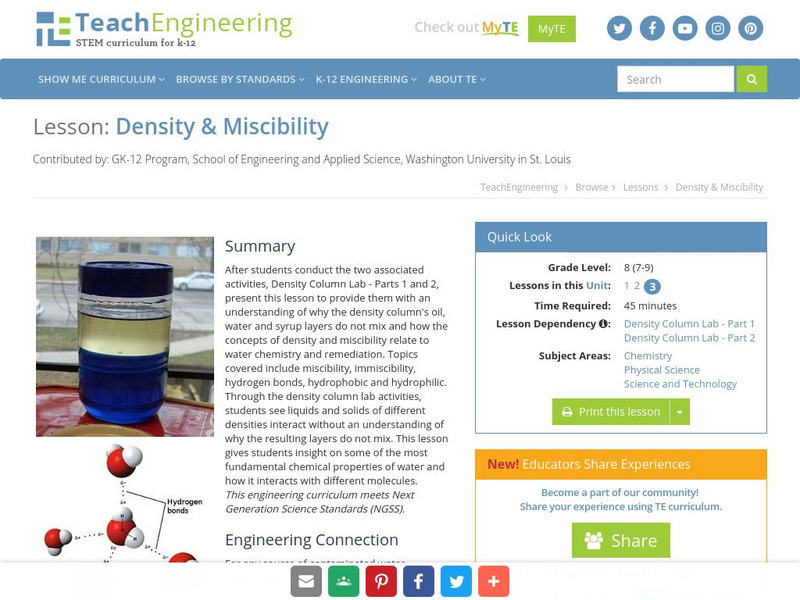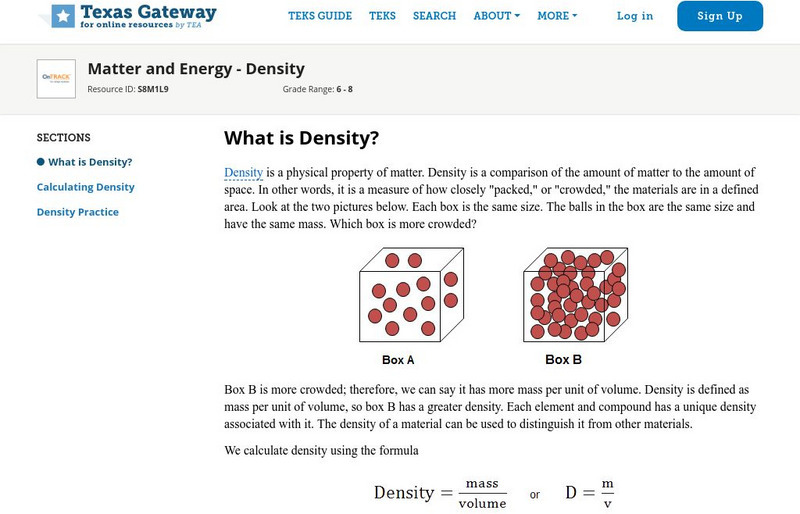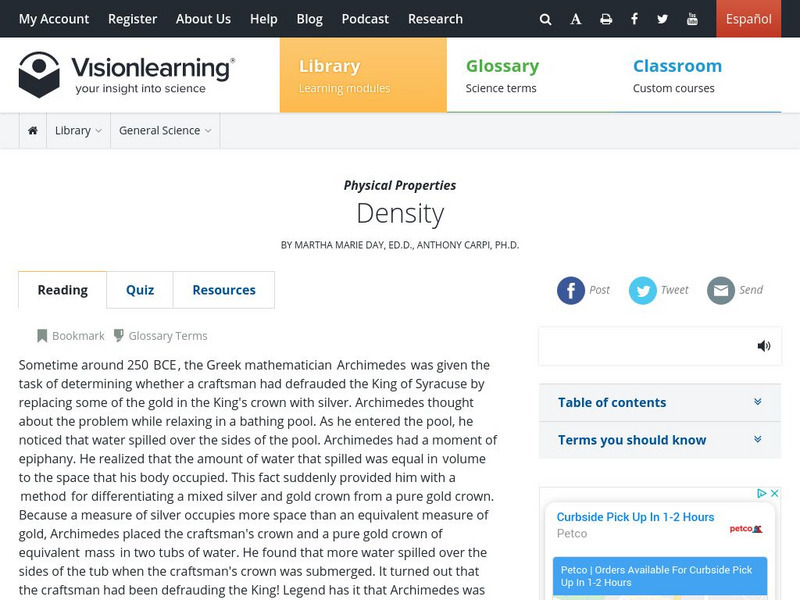CK-12 Foundation
Ck 12: Unit Conversions
[Free Registration/Login may be required to access all resource tools.] In this online tutorial students will begin to identify and use conversion factors and to also use the method of dimensional analysis to convert between units....
Science Education Resource Center at Carleton College
Serc: Ocean Water: Density
In this lesson students will learn about the stratification of the ocean by using a simulation to show the different densities. The simulation explores how temperature, salinity, and wind affect the development of water stratification.
Georgia Department of Education
Ga Virtual Learning: Fluids
In this interactive module you will be introduced to a unit on fluid dynamics. Learn how an object's density relates to its mass and volume by completing various activities and interactives.
Georgia Department of Education
Ga Virtual Learning: Georgia Virtual Learning: Geology: Minerals
In this amazing interactive tutorial, you'll learn about minerals - the building blocks or rocks and the Earth. We'll talk about what makes something a mineral, and how differences in these minerals let us organize them into different...
OpenStax
Open Stax: Density
From a chapter on Fluid Statics in a Physics textbook. This section of the chapter defines density, explains how to use a known density to find the mass of a substance, and compares different densities. Includes examples, questions,...
TeachEngineering
Teach Engineering: Taking the Boat to Manaus
In this activity, the students will apply the concepts they learned regarding mass, volume and density in the previous activities to design a boat.
TeachEngineering
Teach Engineering: Determining Densities
Students will use two different methods to determine the densities of a variety of materials and objects. The first method involves direct measurement of the volumes of objects that have simple geometric shapes, while the second uses the...
TeachEngineering
Teach Engineering: Cartesian Diver
Students observe Pascal's law, Archimedes' principle, and the ideal gas law as a Cartesian diver moves within a closed system.
TeachEngineering
Teach Engineering: How Dense Are You Lab
Students determine the mass and volume of soil samples and calculate the density of the soils. They use this information to determine the suitability of the soil to support a building foundation.
TeachEngineering
Teach Engineering: Density Column Lab Part 1
In this first part of a two-part lab activity, students use triple balance beams and graduated cylinders to take measurements and calculate the densities of several common, irregularly shaped objects with the purpose to resolve confusion...
TeachEngineering
Teach Engineering: Density Column Lab Part 2
Concluding a two-part lab activity, students use triple balance beams and graduated cylinders to take measurements and calculate densities of several household liquids and compare them to the densities of irregularly shaped objects (as...
TeachEngineering
Teach Engineering: Eureka! Or Buoyancy and Archimedes' Principle
Students explore material properties in hands-on and visually evident ways via the Archimedes' principle. First, they design and conduct an experiment to calculate densities of various materials and present their findings to the class....
TeachEngineering
Teach Engineering: Floaters and Sinkers
Through this curricular unit, students are introduced to the important concept of density. The focus is on the more easily understood densities of solids, but students may also explore the densities of liquids and gases. Students devise...
TeachEngineering
Teach Engineering: The Physics of Fluid Mechanics
Five lessons about the study of fluid mechanics. The unit concludes with students applying what they have learned to determine the stability of individual above-ground storage tanks given specific storm conditions so they can analyze...
TeachEngineering
Teach Engineering: Floaters and Sinkers
This lesson introduces young scholars to the important concept of density. The focus is on the more easily understood densities of solids, but students can also explore the densities of liquids and gases. Young scholars devise methods to...
TeachEngineering
Teach Engineering: What Floats Your Boat?
Students use modeling clay, a material that is denser than water and thus ordinarily sinks in water, to discover the principle of buoyancy. They begin by designing and building boats out of clay that will float in water, and then refine...
TeachEngineering
Teach Engineering: How Dense Are You?
Learners learn about geotechnical engineers and their use of physical properties, such as soil density, to determine the ability of various soils to offer support to foundations. In an associated activity, students determine the bulk...
TeachEngineering
Teach Engineering: Density & Miscibility
After students conduct the two associated activities, Density Column Lab - Parts 1 and 2, present this lesson to provide them with an understanding of why the density column's oil, water and syrup layers do not mix and how the concepts...
Texas Education Agency
Texas Gateway: What Is Density?
This tutorial is an explanation of the properties of density.
Vision Learning
Visionlearning: Earth Science: Minerals Ii: Properties
Instructional module focusing on the physical properties of minerals. Discussion includes the identifying characteristics such as color, hardness, luster, crystal forms, density, and cleavage. Site also includes an interactive practice...
Vision Learning
Visionlearning: General Science: Density
Instructional module focusing on density as a physical property of matter. Discussion incorporates historical references as well as formulas. Site also includes an interactive practice quiz and links relating to the topic.
Sophia Learning
Sophia: Physics: Bill Nye: Eggs Speriment
Created to teach students of the 21st century, SOPHIA is bringing science straight to your fingertips. Become the commander of your own learning experiences as you take part in this density experiment.
Chemistry Collective
Chem Collective: Current Collection of Virtual Lab Problems
A collection of over 30 virtual chemistry problems with accompanying interactive activities. Each problem includes a word file for potential differentiation in your classroom.
Chemistry Collective
Chem Collective: Creating a Stock Solution
In this activity, students use the virtual lab to create dilute solutions from a concentrated stock solution of acids or bases. They must first calculate the correct volumes of concentrated acid solution and water to mix together to...


